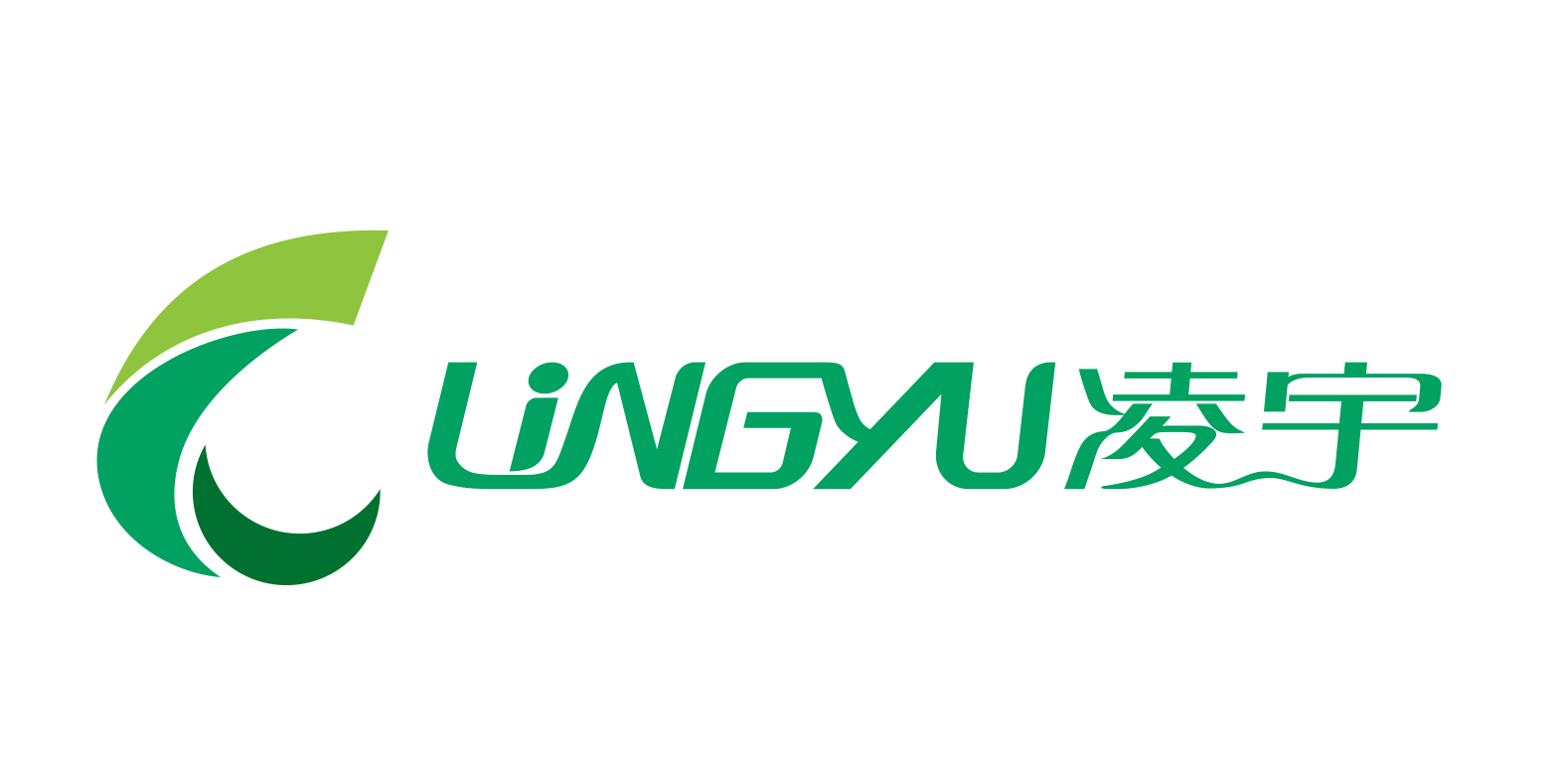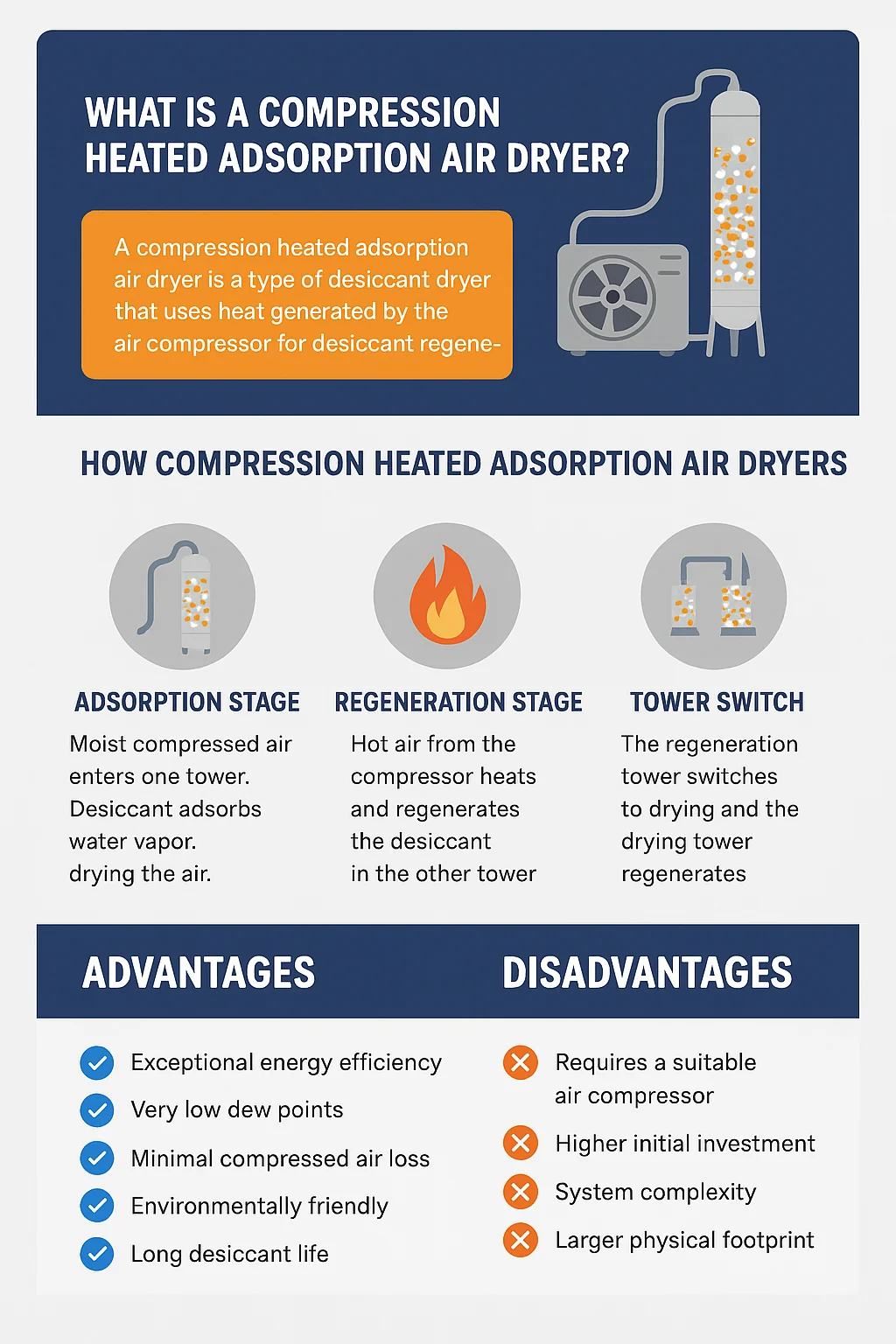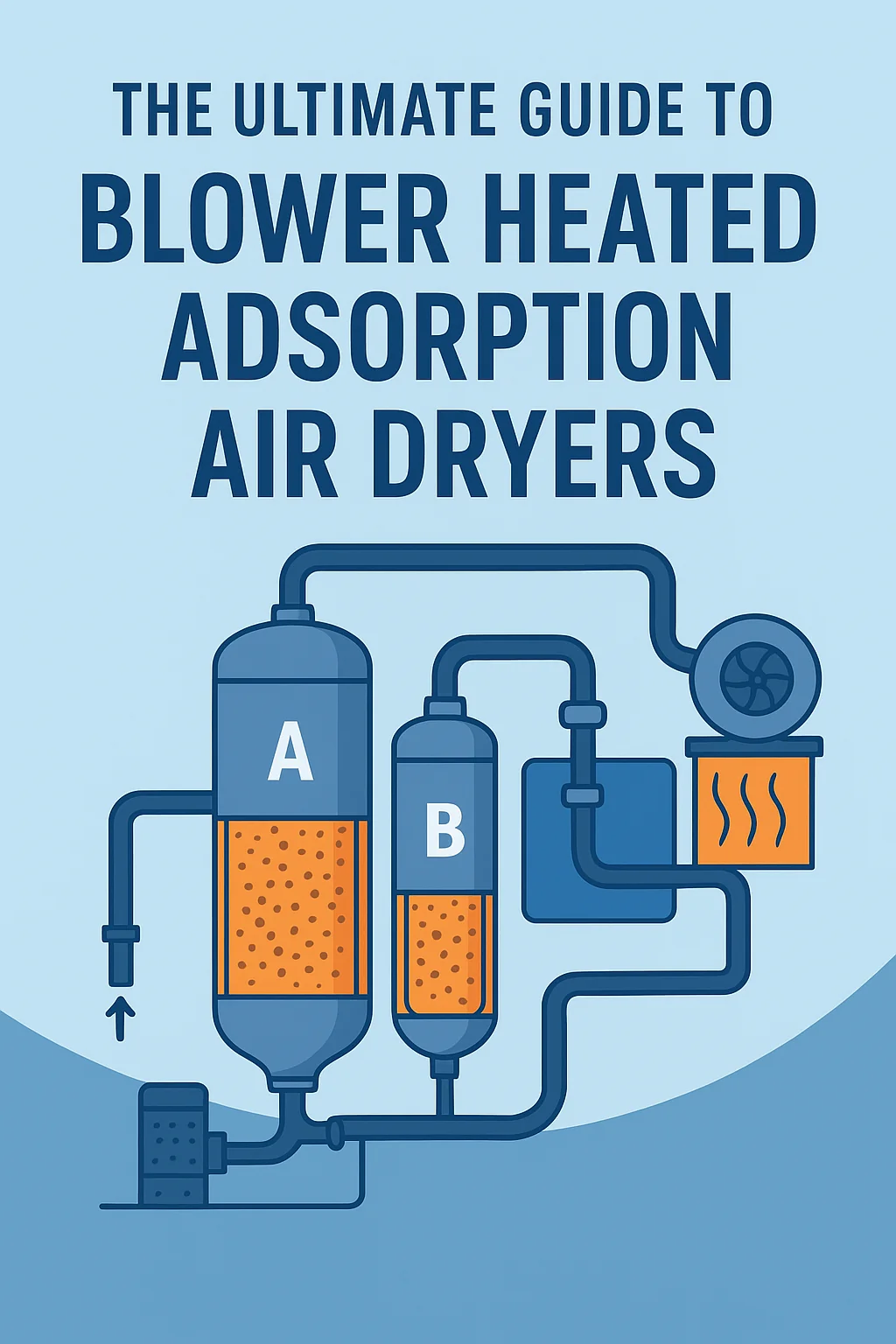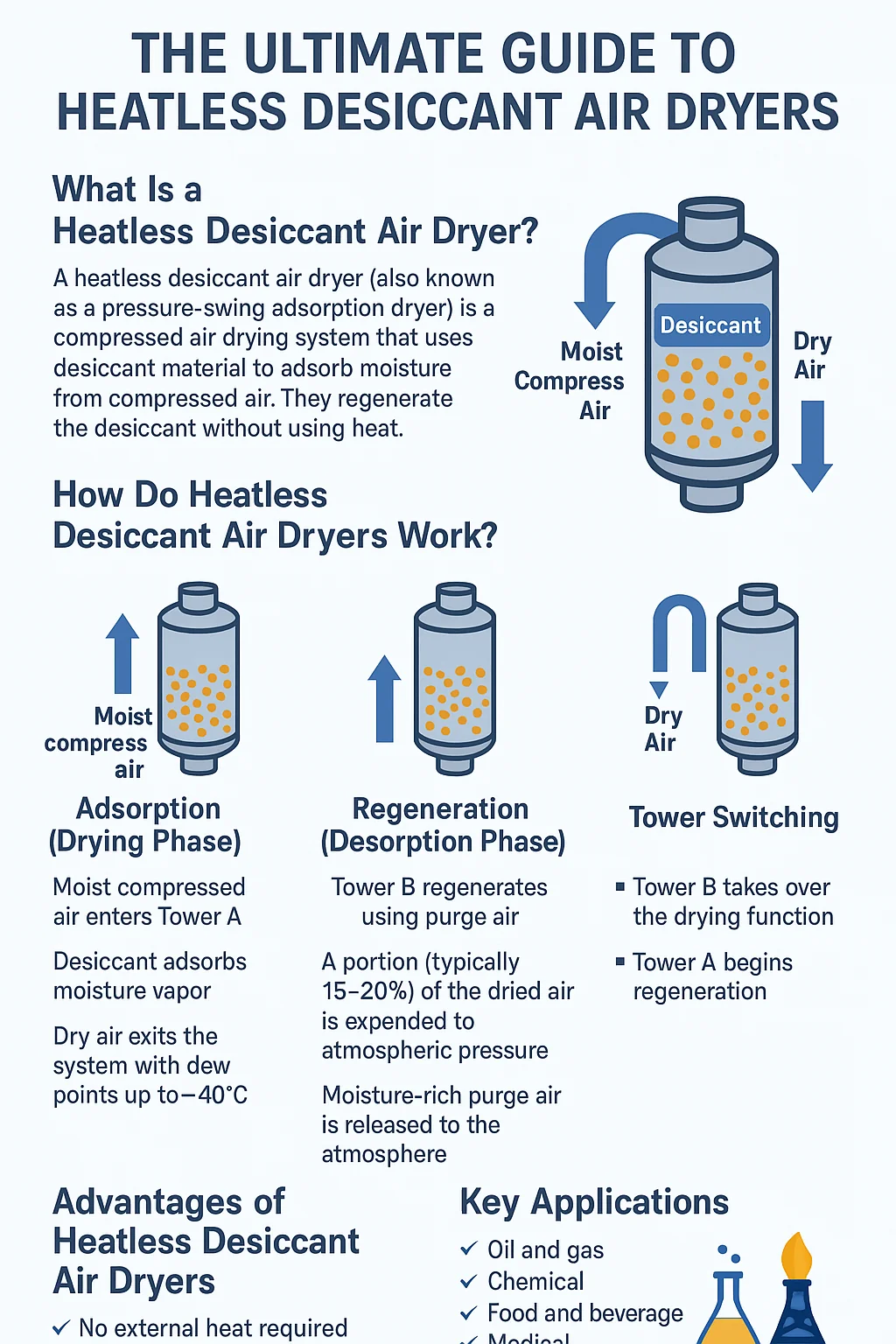Compressed air systems are essential across industries—from manufacturing and automotive to electronics and pharmaceuticals. However, untreated compressed air contains moisture, oil vapor, and contaminants that can damage equipment, reduce product quality, and increase maintenance costs. For applications requiring extremely dry air, adsorption (desiccant) air dryers are the preferred solution.
Among these, heated regeneration adsorption air dryers offer enhanced efficiency, lower energy consumption, and reliable performance in demanding environments.
This guide provides an in-depth overview of how heated regeneration adsorption dryers work, their various types, advantages, limitations, and key factors to consider when selecting the right unit for your system.
What Is a Heated Regeneration Adsorption Air Dryer?
A heated regeneration adsorption air dryer is a type of desiccant dryer that removes moisture from compressed air using a hygroscopic material (such as activated alumina, silica gel, or molecular sieves). Unlike heatless dryers, heated regeneration models use external or internal heating to regenerate (dry) the desiccant, reducing the amount of purge air required and improving energy efficiency.
These dryers usually consist of two towers filled with desiccant. One tower dries incoming compressed air while the other regenerates. The towers alternate to provide continuous dry air.
Heated regeneration dryers are typically used where very low dew points are required, such as:
Instrumentation and control air
Pharmaceutical and food processing
Electronics and semiconductor fabrication
Chemical and petrochemical plants
Powder coating operations
How Do Heated Regeneration Adsorption Air Dryers Work?
While designs differ, the core process includes three main phases:
1. Adsorption (Drying Phase)
Moist compressed air enters Tower A.
Water vapor is captured by the desiccant material.
Dry air exits the system with dew points as low as –40°C to –70°C (–40°F to –94°F).
2. Regeneration (Desorption Phase)
Tower B undergoes regeneration while Tower A dries the air.
Heating is used to release moisture from the desiccant. Depending on design, the heat may come from:
Internal heaters
External heaters
Blower air
Combination heat/purge methods
The applied heat drives out the moisture absorbed in the previous cycle.
3. Cooling
After heating, the desiccant must cool to a stable temperature to avoid increasing the air temperature and dew point when the tower switches back online.
Finally, the towers alternate positions, ensuring continuous air drying.
Types of Heated Regeneration Adsorption Air Dryers
There are three primary types, each with its own operating method and energy profile.
1. Heated Purge Desiccant Dryers
These units use internal heaters to warm a portion of already-dried compressed air (purge air).
Key characteristics:
Uses heated purge air for regeneration
Lower energy cost than heatless dryers
Still consumes some compressed air
Suitable for most industrial applications
2. Blower Purge (Externally Heated) Desiccant Dryers
Instead of using compressed air for regeneration, these dryers use:
An external heater
An ambient air blower
Advantages:
Minimal compressed air loss
Highly energy efficient
Best for large-scale operations and high flow rates
3. Heat of Compression (HOC) Desiccant Dryers
These systems utilize the natural heat generated by oil-free compressors (centrifugal or rotary).
Key advantages:
Extremely energy efficient
No heater required
Very low operating cost
Consideration: Compatible mainly with oil-free compressors.
Advantages of Heated Regeneration Adsorption Air Dryers
Heated regeneration dryers provide several performance and economic benefits:
✔ Very Low Dew Points
Achieve dew points from –40°C to –70°C, ideal for sensitive or precision applications.
✔ Reduced Purge Air Consumption
Heated regeneration cuts purge air use drastically compared to heatless dryers—especially with blower purge and HOC models.
✔ Energy Efficiency
Using external heaters or heat of compression can significantly reduce operational costs.
✔ Long Desiccant Life
Gentler regeneration temperatures prevent dehydrating or damaging the desiccant beads, extending service life.
✔ Stable Performance in Harsh Conditions
Maintain drying capacity in:
Cold climates
High humidity
Variable compressor loads
✔ Suitable for Large Airflows
Industrial production facilities benefit from their scalable design.
Disadvantages and Limitations
✖ Higher Initial Investment
More complex systems mean higher upfront costs.
✖ Requires Electrical Power for Heating
Energy demands vary depending on the dryer type.
✖ Longer Regeneration Cycles
Heated regeneration takes more time compared to heatless models.
✖ Additional Components to Maintain
Heaters, blowers, and sensors require periodic servicing.
✖ Heat of Compression Systems Require Oil-Free Compressors
Compatibility limitation for some factories.
Key Factors to Consider When Selecting a Heated Regeneration Adsorption Air Dryer
1. Dew Point Requirements
Determine whether your application needs:
–40°C
–70°C
Or custom ultra-dry conditions
2. Airflow Capacity
Match the dryer capacity (CFM/m³/min) to your compressor output while accounting for:
Temperature
Pressure
Relative humidity
3. Energy Consumption
Compare long-term operating costs for:
Heated purge
Blower purge
HOC dryers
Even with a higher upfront cost, blower purge and HOC units often offer lower lifetime cost.
4. Installation Environment
Consider climate conditions, space availability, and air quality.
5. Desiccant Type
Different desiccants offer different adsorption characteristics:
Activated alumina: cost-effective and durable
Molecular sieve: achieves ultra-low dew points
Silica gel: high capacity at moderate dew points
6. Maintenance Requirements
Evaluate:
Filter accessibility
Desiccant replacement intervals
Heater/blower service needs
7. Compatibility with Compressors
Especially important for HOC dryers.
Best Applications for Heated Regeneration Adsorption Dryers
Industries that frequently choose heated regeneration dryers include:
Pharmaceutical manufacturing
Food and beverage production
Electronics & semiconductor precision processes
Chemical and petrochemical plants
Automotive painting and powder coating lines
Instrumentation air in refineries
These industries cannot tolerate even small traces of moisture in their air systems.
Conclusion
Heated regeneration adsorption air dryers are among the most reliable and energy-efficient solutions for producing ultra-dry compressed air. By leveraging heat for regeneration, they significantly reduce purge air consumption and provide exceptional dew point performance.
Whether you need a heated purge, blower purge, or heat of compression system, choosing the right dryer depends on your dew point requirements, compressor setup, operating environment, and long-term energy goals.
With proper selection and maintenance, a heated regeneration adsorption air dryer will enhance the reliability, efficiency, and longevity of your entire compressed air system.








